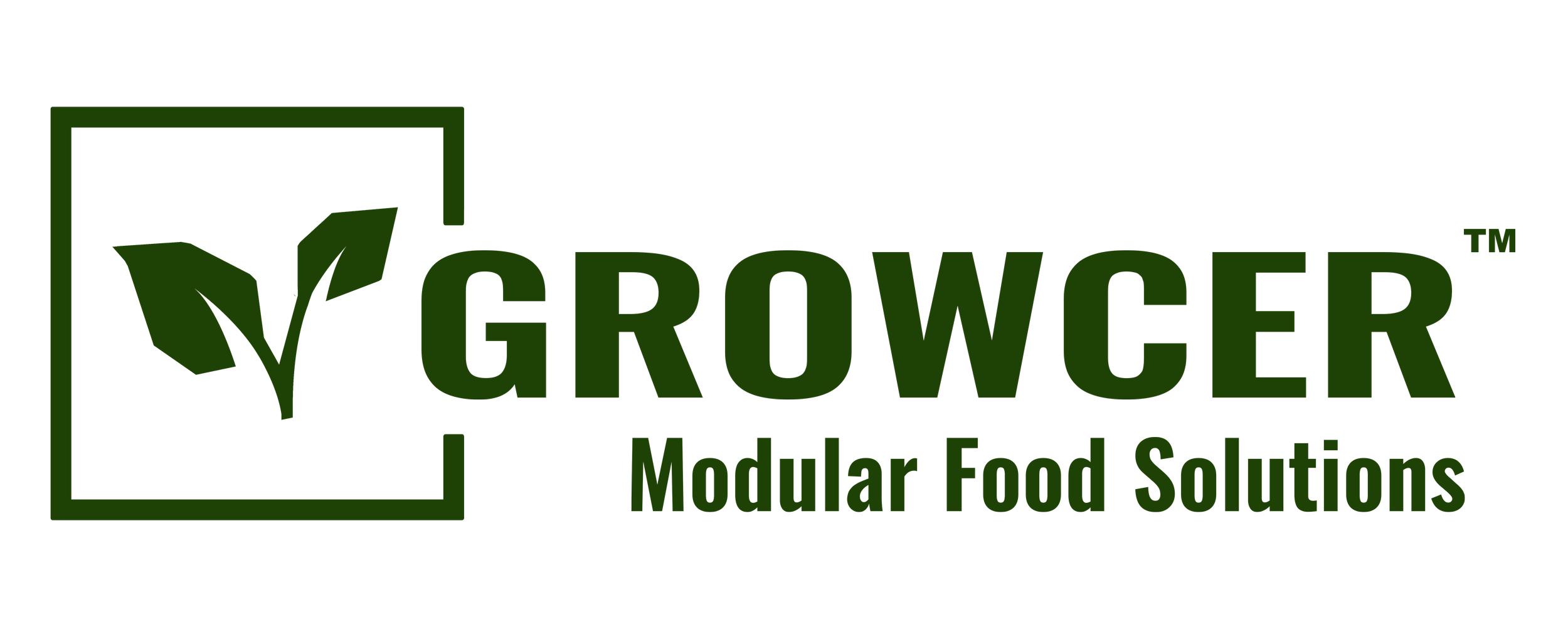Hydroponics 101
We tend to think of plants growing outside with sunlight and soil, but other ways of getting light and nutrients are just as viable for plant growth. That’s where hydroponics growing comes in because hydroponics is growing plants in nutrient-rich water, without soil.
How it works
Let’s think about what plants need to grow:
Water
Nutrients
Air (CO2)
Light
Space
Time
Right Temperature
All these requirements can be provided in a controlled indoor environment, like Growcer’s modular farm.
Light
Plants can’t get up and go get their own food, so they make their own through a process called photosynthesis.
Plants can’t get up and go get their own food, so they make their own through a process called photosynthesis. Photosynthesis describes the process of plants using light to convert water and carbon dioxide from the air into food. Plants then store and eat this food (carbohydrates) through cellular respiration.
In a Growcer modular farm, you will be using high efficiency LED Grow Lights to replace sunlight and enable the plants to photosynthesize (make food). The Grow Lights are tailored to growing your specific crop, and you’ll never have to worry about any cloudy days indoors!
Water
If you remember from the previous section, water is a key ingredient in making food from photosynthesis. However, water (H2O) and hydrogen (H) also influence other important plant growth factors.
The amount of hydrogen in water is measured as “pH” or “potential of hydrogen.” The pH level of water is how acidic or basic it is. pH influences not only the amount of hydrogen available for the plant to conduct photosynthesis, but also the nutrient availability, bacterial activity, and toxicity of the growing environment.
Non-mineral elements
Carbon, hydrogen, and oxygen are the three most used elements by plants and are taken in through air and water. These three elements are the building blocks of carbohydrates (which plants eat for energy) and make up a large part of the plant’s cellulose (the plant cell walls that give the plant its structure and strength). Without food for energy or cellulose for structure, you don’t have a plant!
Mineral elements
Plants need 13 mineral elements to grow and thrive. The mineral elements can be split into two categories: macronutrients and micronutrients.
Macronutrients are used in greater amounts by plants. Your primary macronutrients, or “big three,” are nitrogen, phosphorus, and potassium (NPK). You might recognize NPK numbers on fertilizer products as the percentage of nitrogen, phosphorus, and potassium in the fertilizer.
On the other hand, plants only require a tiny amount of micronutrients. Examples of micronutrients are calcium, sulfur, magnesium, iron, copper, zinc, and boron.
If you don’t have enough mineral elements in your nutrient solution, the plants will show signs of deficiency of one or more nutrient elements. If you have too much of one mineral element, the plants will show signs of toxicity.
Nutrient availability
Plants can be picky eaters. If the growing environment is not perfect, this can lead to nutrient deficiencies or toxicity because plants are taking in too little, or too much, nutrients.
As good growers, we always monitor pH and E/C levels (fertilizer strength) to make sure nutrients are available to plants at the right amounts. Good growers also regularly monitor plants for signs and symptoms of deficiency or toxicity to be able to correct the issue quickly. Ensuring the proper amount of nutrients minimizes damage and maximizes potential yield.
By controlling temperature, indoor plants can outperform their outdoor counterparts and grow bigger, faster.
For example, when pH is too low, plants better take up available micronutrients like iron, copper, zinc, and boron. But if pH is too high, these same nutrients become less available to the plant causing symptoms of deficiency. However, not all is lost. If the problem is identified and pH is corrected, the deficiency/toxicity symptoms in the plant will slowly fade away.
With hydroponics, nutrients are provided to the plant in a form they can use immediately. Water soluble fertilizers are tailored to have the specific nutrient mineral elements for the plants you’re growing. Nutrient availability levels are rebalanced through monitoring and the addition of stock nutrient solutions, or acids and bases (pH down or pH up products), to control pH levels and keep the growing environment healthy. Occasionally, there are nutrient flushes where the growing solution is changed out completely to regain control of nutrient availability.
Temperature
Plant processes such as photosynthesis (creating food/energy), transpiration (water loss), respiration (breathing), seed germination and flowering (bolting) are all influenced by temperature.
All plants have different optimum temperature ranges during the day and night for maximal growth. By keeping plants in optimal temperatures, we optimize the speed plants grow. By controlling temperature, indoor plants can outperform their outdoor counterparts and grow bigger, faster.





